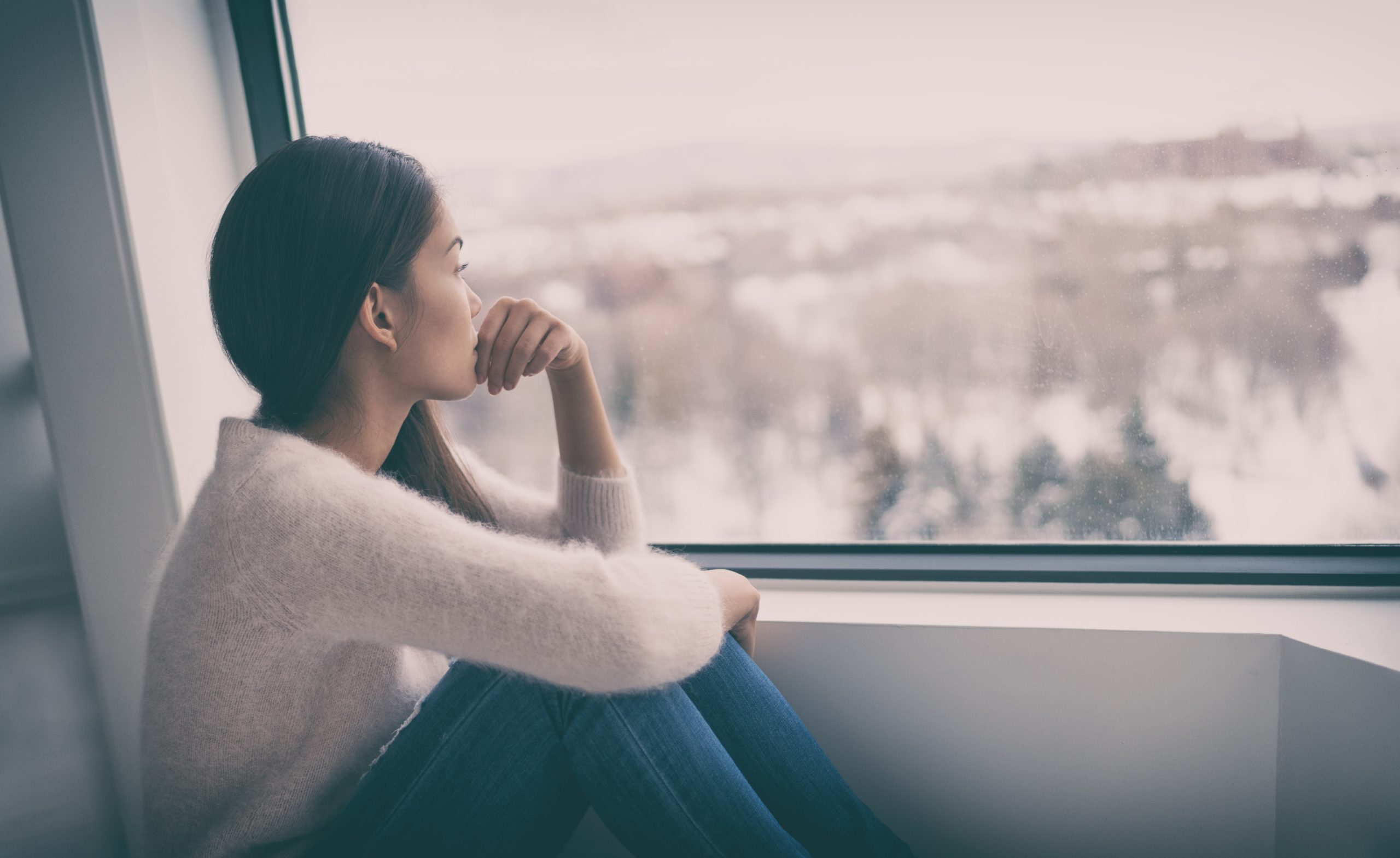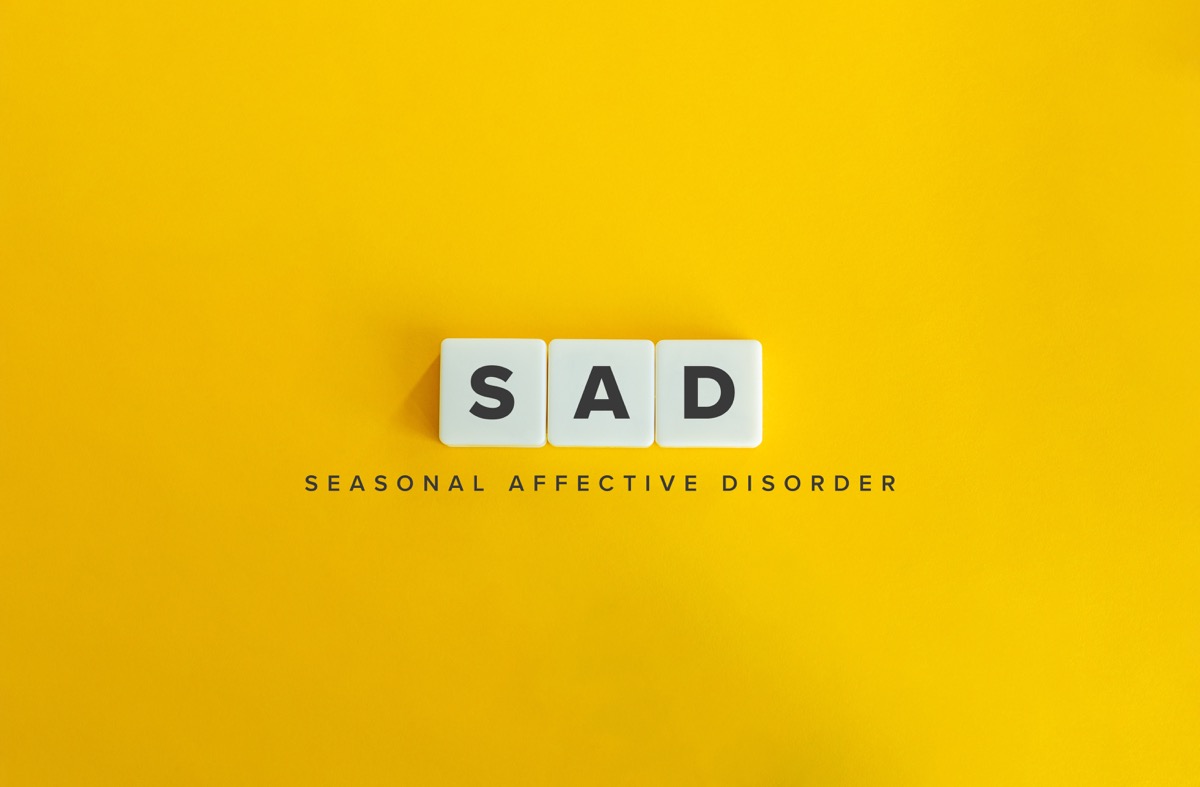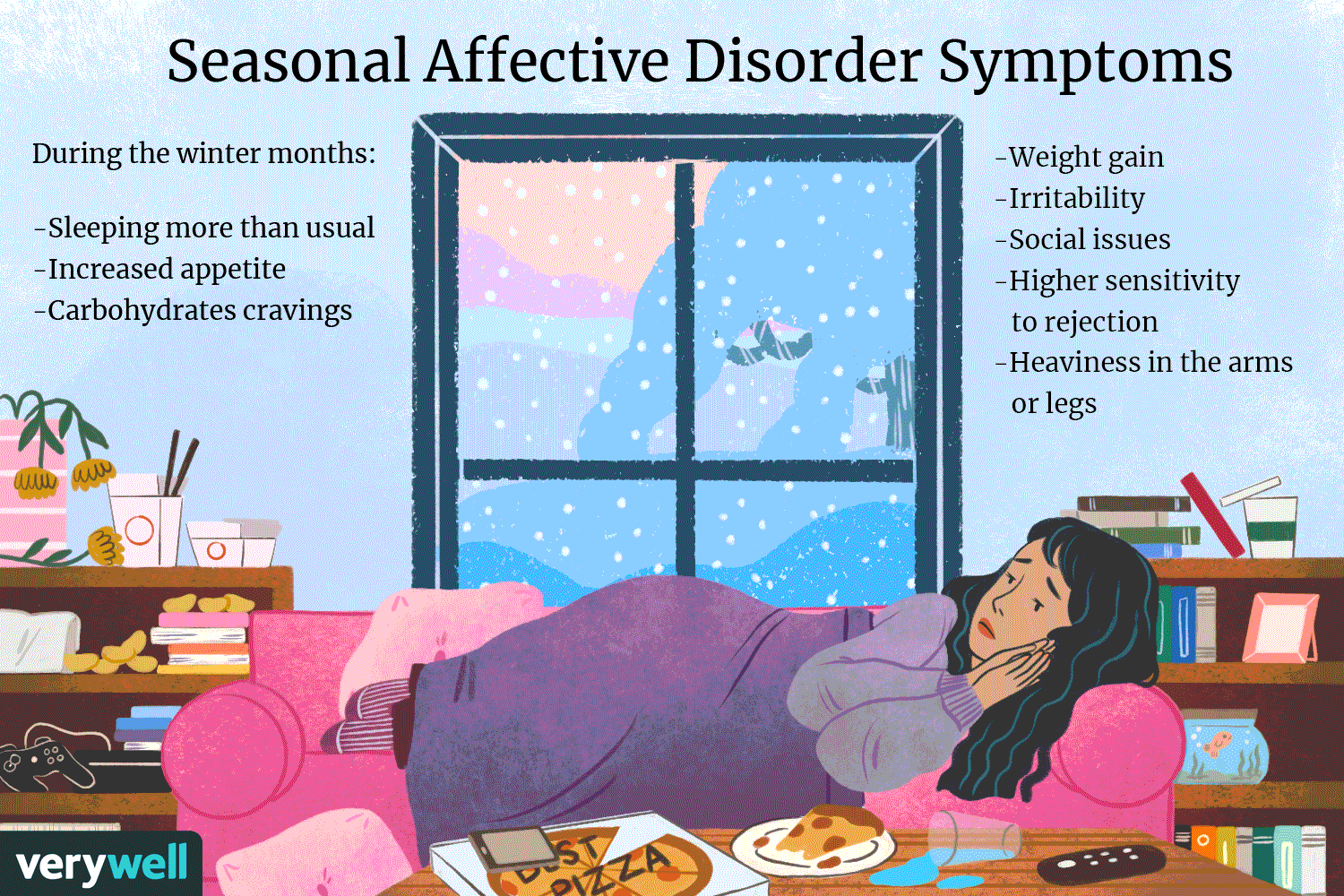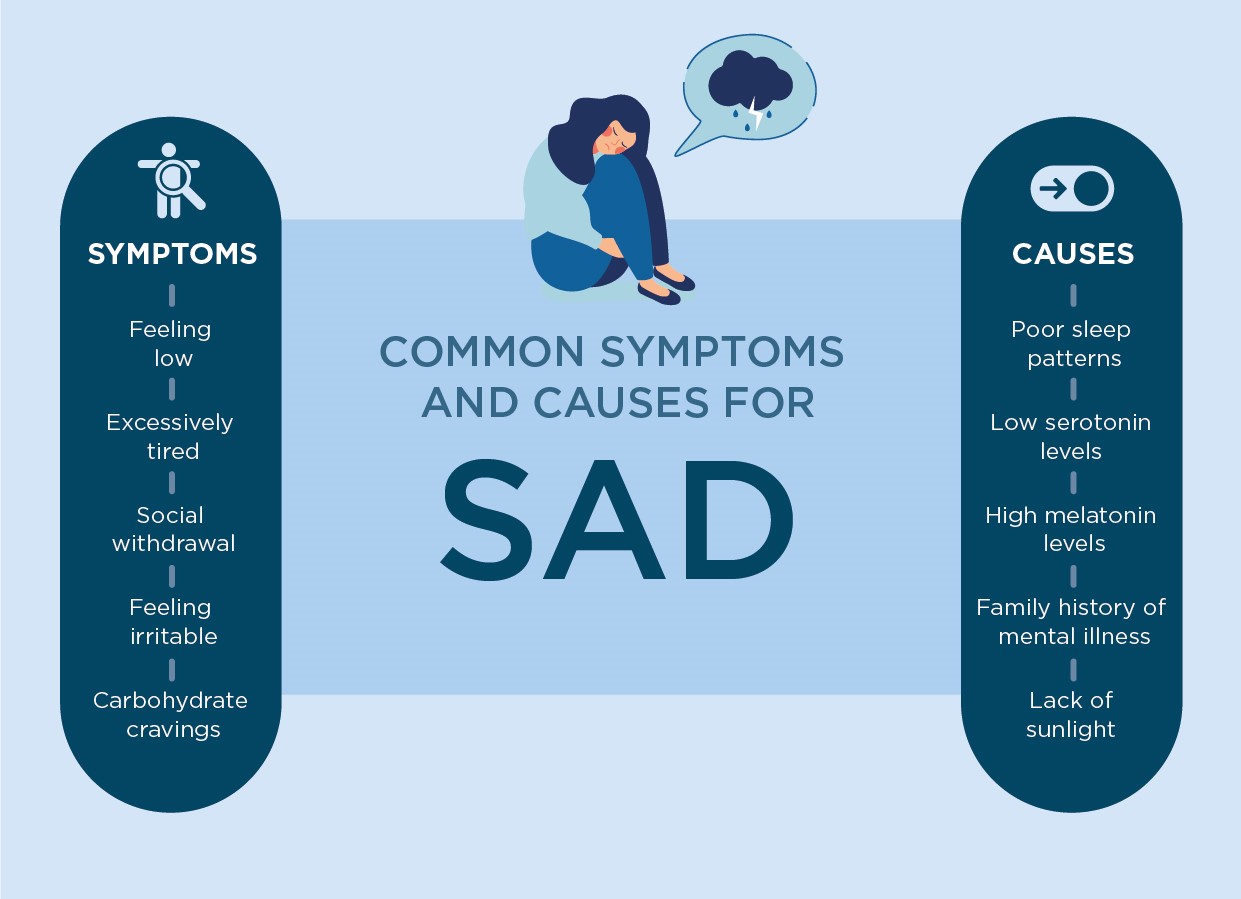

What is seasonal affective disorder (SAD)?
Seasonal affective disorder (SAD) is a type of depression that comes and goes according to the season. People with SAD have symptoms of depression or mania at roughly the same time each year.
SAD usually develops in autumn and winter, then disappears in spring and summer. In some people, the symptoms develop in spring and early summer.
What are the symptoms of SAD?
Symptoms usually start out mild and get worse as the season progresses. When the season changes, people normally become completely well again.
Symptoms of SAD in winter include:
- lack of energy
- sleeping too much
- finding it hard to wake up in the morning
- feeling very tired all the time
- overeating and craving carbohydrates
- gaining weight
- losing interest in normal activities
Symptoms of SAD in summer include:
- trouble sleeping
- not feeling hungry
- losing weight
- feeling agitated and anxious
People with a mental health disorder might find their symptoms change at different times of the year. For example, some people with bipolar disorder find they are more likely to experience mania in spring and summer and depression in winter.
What causes SAD?
SAD is thought to be caused by changes to the body’s circadian rhythms (its ‘body clock’) at certain times of the year. It may also happen because in winter the body produces less of the hormones melatonin and serotonin, which affect sleep and mood.
When should I see my doctor?
SAD is rare in Australia, but many Australians report that they feel flat and lethargic in winter. If you have symptoms that don’t go away and are affecting your everyday life, it’s important to see a doctor.
How is SAD diganosed?
SAD can be quite hard to diagnose. You may not be diagnosed with SAD until you have experienced the same symptoms during winter for at least 2 years.
How is SAD treated?
One treatment that works well for SAD is bright light therapy, also known as phototherapy. Being exposed to a bright light coming from a special light box for 30 minutes a day can help you to feel much better after a few days.
Other depression treatments can also work, including medicines, vitamin D supplements, or counselling.
It’s a good idea to make your house as light as possible during autumn and winter, and to sit close to windows as often as you can.
Getting outside as much as possible and exercising regularly can also help to lift your mood and reduce any symptoms of SAD.




